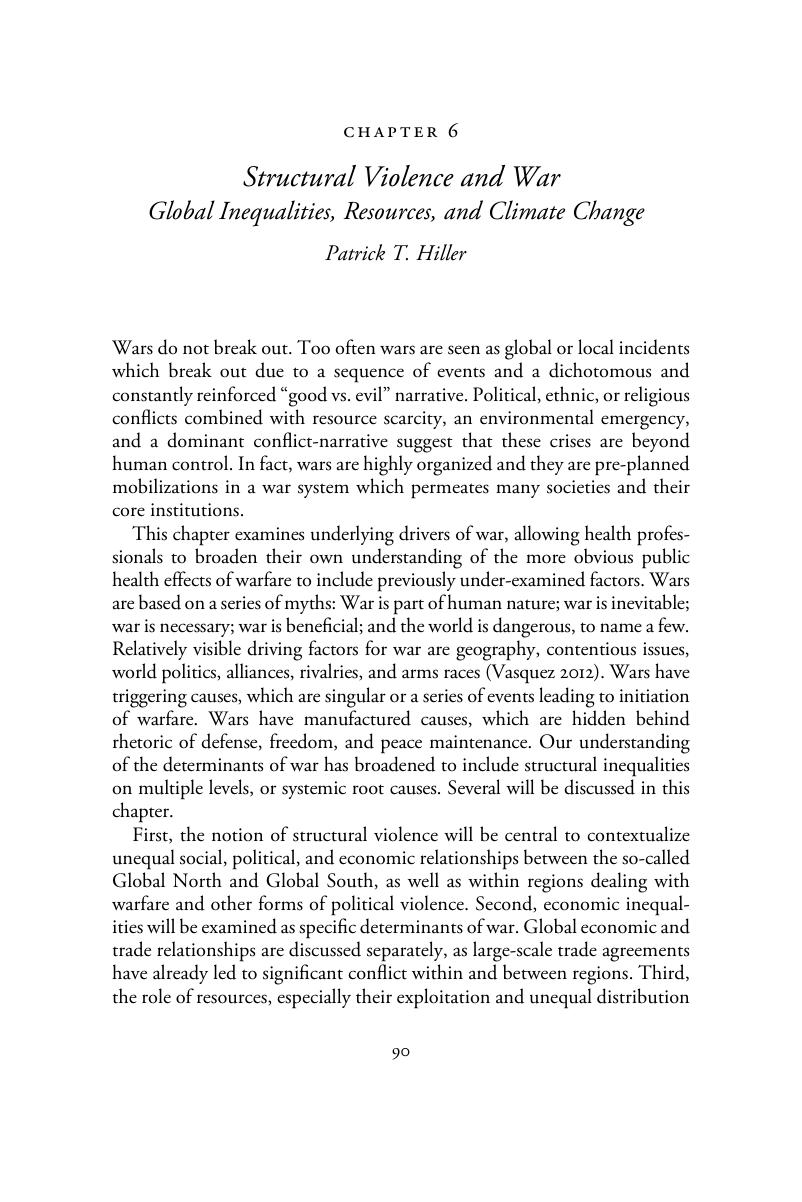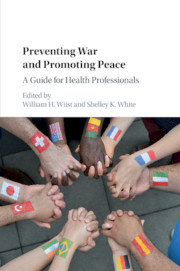Book contents
- Preventing War and Promoting Peace
- Preventing War and Promoting Peace
- Copyright page
- Dedication
- Contents
- Figures
- Tables
- Contributors
- Foreword
- Preface
- Acknowledgments
- Introduction
- Part I The Health Effects of War and Weapons of War
- Part II Social Determinants of War
- Chapter 5 The Normalization of Militarism and Propensity for War
- Chapter 6 Structural Violence and War
- Chapter 7 Under What Conditions Does Ethnic Conflict Result in Armed Violence?
- Chapter 8 The War Profiteers
- Chapter 9 News as Entertainment
- Chapter 10 The Quiet Military Buyout of Academia
- Part III Preventing War and Promoting Peace
- Part IV Teaching and Research in the Health Professions Toward the Prevention of War
- Appendices
- Index
- References
Chapter 6 - Structural Violence and War
Global Inequalities, Resources, and Climate Change
from Part II - Social Determinants of War
Published online by Cambridge University Press: 28 December 2017
- Preventing War and Promoting Peace
- Preventing War and Promoting Peace
- Copyright page
- Dedication
- Contents
- Figures
- Tables
- Contributors
- Foreword
- Preface
- Acknowledgments
- Introduction
- Part I The Health Effects of War and Weapons of War
- Part II Social Determinants of War
- Chapter 5 The Normalization of Militarism and Propensity for War
- Chapter 6 Structural Violence and War
- Chapter 7 Under What Conditions Does Ethnic Conflict Result in Armed Violence?
- Chapter 8 The War Profiteers
- Chapter 9 News as Entertainment
- Chapter 10 The Quiet Military Buyout of Academia
- Part III Preventing War and Promoting Peace
- Part IV Teaching and Research in the Health Professions Toward the Prevention of War
- Appendices
- Index
- References
Summary

- Type
- Chapter
- Information
- Preventing War and Promoting PeaceA Guide for Health Professionals, pp. 90 - 102Publisher: Cambridge University PressPrint publication year: 2017
References
- 1
- Cited by



